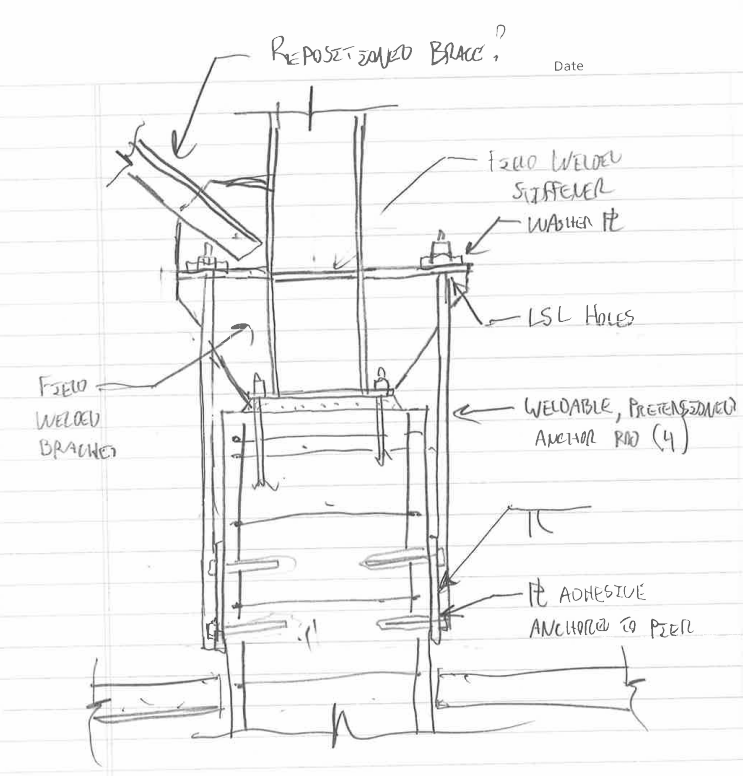someengineer
Structural
Hello,
Does anyone have any insight into practical methods to increase pier anchorage capacity?
We have a situation where there is an existing frame that supported a vessel that was laterally supported at the top. Now our client wants to replace the vessel with another one (using the same frame and foundation) but there will not be any top lateral support. As you can imagine now there are some pretty significant shear and uplift loads in the foundation (from seismic and wind). The frame is supported on 4 concrete piers that tie into a mat below grade.
With the new loading the piers do not have enough concrete breakout capacity in both tension and shear. Does anyone have any practical methods to reinforce existing piers to resist the above failure modes? We have a few ideas but they are difficult to determine the load distribution and effectiveness. The client wants to avoid having to replace the foundations since this needs to be done during a mill shut down.
A few ideas we are looking into -
- Pouring additional concrete around the existing piers
- Re-distributing the load into new piers using steel frame modifications
- plating or wrapping the existing piers
Any ideas or experience would be appreciated.
Thanks!
Does anyone have any insight into practical methods to increase pier anchorage capacity?
We have a situation where there is an existing frame that supported a vessel that was laterally supported at the top. Now our client wants to replace the vessel with another one (using the same frame and foundation) but there will not be any top lateral support. As you can imagine now there are some pretty significant shear and uplift loads in the foundation (from seismic and wind). The frame is supported on 4 concrete piers that tie into a mat below grade.
With the new loading the piers do not have enough concrete breakout capacity in both tension and shear. Does anyone have any practical methods to reinforce existing piers to resist the above failure modes? We have a few ideas but they are difficult to determine the load distribution and effectiveness. The client wants to avoid having to replace the foundations since this needs to be done during a mill shut down.
A few ideas we are looking into -
- Pouring additional concrete around the existing piers
- Re-distributing the load into new piers using steel frame modifications
- plating or wrapping the existing piers
Any ideas or experience would be appreciated.
Thanks!

![[idea] [idea] [idea]](/data/assets/smilies/idea.gif)
![[r2d2] [r2d2] [r2d2]](/data/assets/smilies/r2d2.gif)
